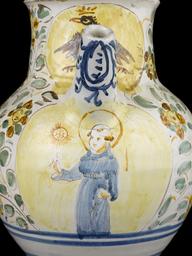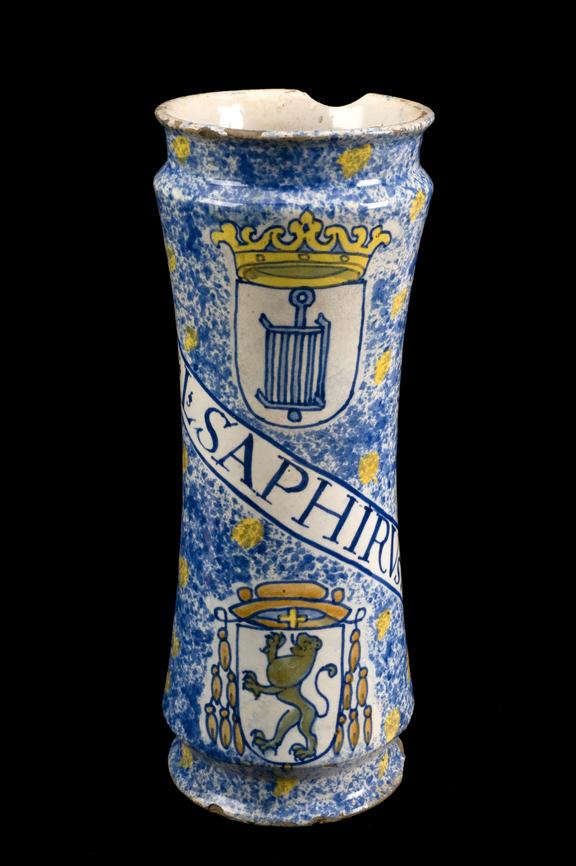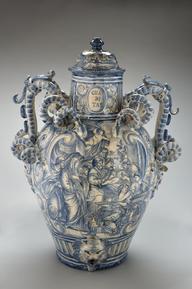

Albarello pharmacy jar, Spain, 1600-1625
- Made:
- 1600-1625 in Talavera de la Reina
- maker:
- Unattributed

Albarello, earthenware, from monastery of El Escorial, made at Talavera, Spain, 1600-1625, inscribed L. SAPHIRUS abbreviation of Lapis Saphirus, Latin for sapphire stone, an ingredient in several drugs; with two armorial crests. above the inscription: shield with gridiron (associated with the martyrdom of Saint Lawrence, and golden crown; below the inscription: a Spanish royal crest, golden lion rampant, cross, tassels and petasus (hat). Jar made for the royal monastery at San Lorenzo (Saint Lawrence) de El Escorial, commissioned by Philip II of Spain.
The jar has the label “L. SAPHIRUS”, which refers to Lapis Saphirus. This translates from the Latin as “sapphire stone”. Sapphires were used as an ingredient in several drugs, as were other precious stones such as emeralds and rubies. The Spanish royal coat of arms can be seen below the inscription and this jar is just one of a set made for the royal monastery at El Escorial. The monastery was commissioned by Philip II of Spain following his father, Charles V’s dying wish to found a religious monument and be buried there. It is believed that this example was made in the Spanish city of Talavera de la Reina.
Details
- Category:
- Medical Ceramic-ware
- Collection:
- Sir Henry Wellcome's Museum Collection
- Object Number:
- A43014
- Materials:
- earthenware
- Measurements:
-
overall: 308 mm 125 mm, 1.16 kg
- type:
- albarello
- credit:
- Loan, Wellcome Trust




